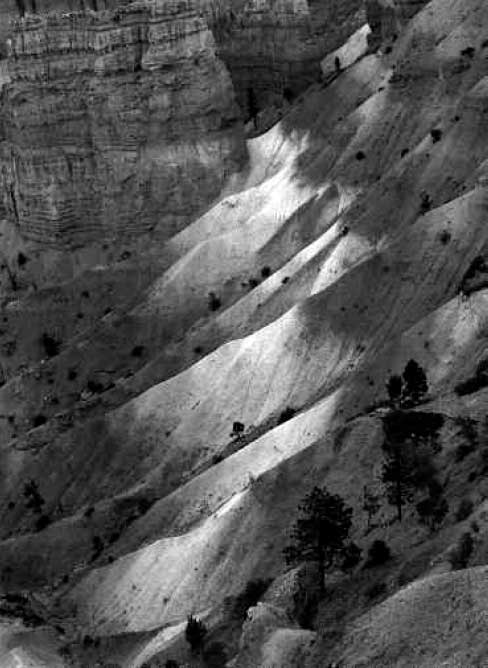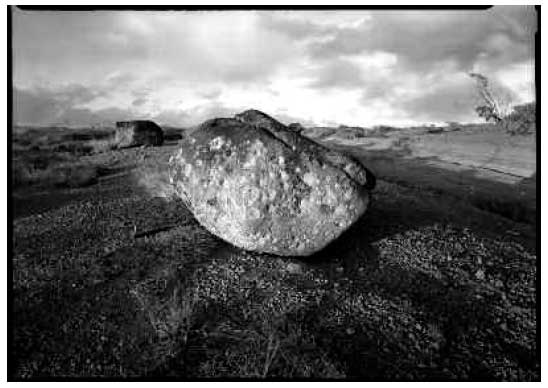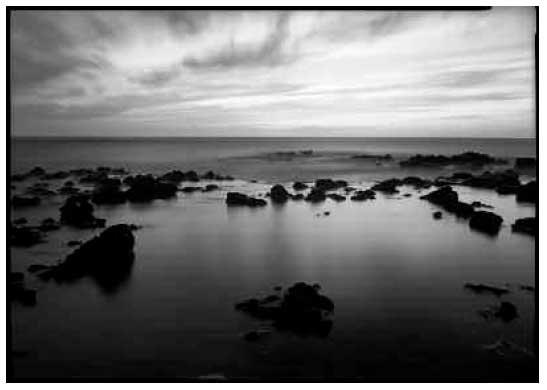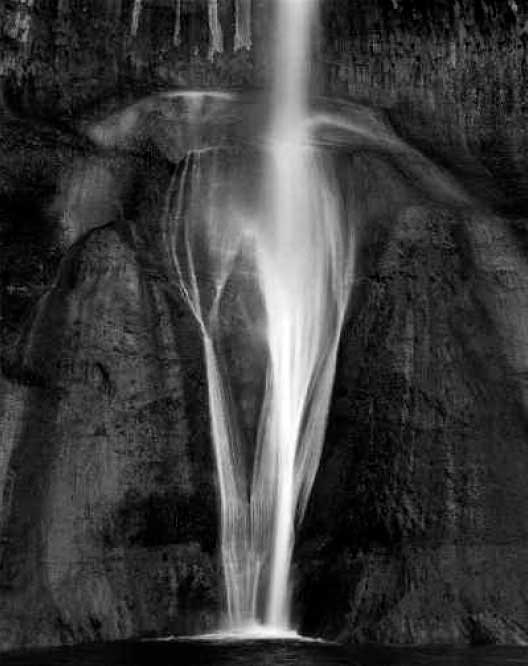Awakening Sight
I did not realize the seriousness of the injury at the time of the accident. In the emergency room, the physician on duty urgently consulted an ophthalmologist. At that point, I understood that my eye had been seriously damaged, and I became terrified of the possible consequences. The doctor emphatically informed me that I needed surgery immediately to see if the eye could be repaired. I implored him to do his absolute best to save my vision—that I was a photographer and needed my eyes. Fears of a completely altered life entered my mind. Would I ever be able to drive again? To photograph? To live a normal life? Would I be disfigured? He then said something that has burned itself into my memory of that day. He said calmly and with great assurance: “You will be as good a photographer with one eye as you were with two.”
|
|
After seven or eight hours in surgery—in which the surgeon removed the fragments of wood, repaired my crushed eyeball, tried to repair my massively torn retina, and performed cosmetic surgery to rebuild the lost tissue on the right side of my face—I was sent to the recovery room.
The next week was pure hell. I underwent multiple tests and examinations to determine whether any useful vision could be returned to my eye. I had no light perception whatsoever due to the retinal damage, and was told that I would not see at all with my right eye for the rest of my life. Medical technology was many years away from transplanting a retina, and mine was far too damaged to repair. My doctor explained that the risk of sympathetic ophthalmia, in which the good eye follows suit with its injured neighbor and also loses the ability to see, was far greater than the chance of seeing out of that eye ever again—and that it should be removed.
My darkest hours of self doubt followed upon receiving his diagnosis. Many questions arose for me about the role of fate, or accident, in our lives. Was this event fated? Or was it simply an accident? Could it have been avoided? I recalled an acute memory of a night when I was nineteen years old, contemplating my unknown future and feeling much hope and promise, in which an intuitive feeling persisted—one that I could not shake from my consciousness at the time—that I might someday lose an eye. When I reached my friend and longtime teacher, Nicholas Hlobeczy, he said simply, “Thy will be done.”
My mother, my girlfriend, and a select group of friends gathered at my home prior to the second surgery, with a bottle of excellent Armagnac, to drink a poignant toast to the thirty-three years of vision my eye had faithfully provided me. I did a small series of self portraits of my damaged face and eye, and went to bed wondering if I would—or could—ever again feel like a complete human being.
The very next morning, I checked myself into the hospital to have my eye surgically removed. After settling into my room, several hours before surgery, I was asked if I wanted a sedative. “Not yet,” was my answer. It felt important to experience this moment as fully as possible. My anxiety was mounting. I didn’t know what to do or where to turn. I decided to take a walk to the hospital chapel to try to digest the experience. I never knew such depression, fear, and despondency—it was completely paralyzing. I was scared to death of the future—and of the finality of the soon-to-be-performed surgery.
 |
Then, in the chapel, came a moment of realization, in a burst of insight, that changed my attitude toward this event and gave me great strength and an unshakable sense of courage. A question unexpectedly arose in my mind: If I cannot let go of something as relatively insignificant as one eye, one small part of my body, what will happen when I have to completely let go of my entire body, when I die? If I cannot withstand this shock, I will never be able to gracefully and consciously withstand the moment of death. This experience was a kind of test—a foretaste of letting go. From that moment on, my experience of losing my eye changed—and the fear and depression never returned with anywhere near the same intensity.
Quite to the contrary; after the realization in the chapel, the entire experience of having the eye removed, of learning to see again, and going through the inevitable psychic transformation, became my personal creative quest. A quest that, more or less, I welcomed, and of which I tried to make the best possible use. Something had changed in me. I felt less under the dominion of my ego, and more open to life, to people, and to the changes inherent in our lives. I learned much about myself from questioning why such a massive injury had been the necessary catalyst to deliver me to the threshold of this new state of being.
A transformation had occurred on many different levels, physical, emotional, psychological, and spiritual, due to the ongoing effects of the injury. It served to break down many of the unquestioned and crystallized attitudes my psyche had developed as an armor; and provided an opportunity for renewal, for a regathering of my energies under different conditions.
First, I needed to relearn ordinary physical tasks: driving a car, pouring liquids into a glass, avoiding collisions with doorways or people on my right side, safely crossing streets, discovering where I needed to sit at a table or in a restaurant in order to see my companions and not just the wall, and acquiring a different sort of respect for my one and only good eye. It gave me the opportunity to prune my life down to the essentials, and to give up superficial interests and nonessential activities. One central goal was added to my life’s purpose: to die seeing, on both a literal and metaphorical level.
As I learned to face the challenges of living with one eye, I received help from an instructive guidebook: A Singular View: The Art of Seeing with One Eye. Written by Frank Brady, an airline pilot who lost an eye when a large mallard smashed the windshield of his plane, the book is an important reference manual for the newly one-eyed, full of helpful hints and tricks for navigating through the process of learning to see with reduced capabilities. But for any interested reader, it returns the act of seeing to an art, to regarding human vision as an intentional activity, one full of potential and with perceptual possibilities we have long forgotten or glossed over. The imperative of learning to see again is an unusual opportunity for an adult; most of us, though genuinely appreciative of our vision, thoroughly take the act of seeing for granted and are mostly untrained in the banquet of gifts that seeing offers.
Observe carefully a young child in the act of seeing and note the sense of wonder, joy, and curiosity that accompanies this adventure. A child can become completely absorbed in examining the world through vision—through any of the senses, for that matter. Seeing is truly a form of magic, a perceptual pleasure, a source of real learning and questioning, and a doorway to invisible worlds. As adults, we have much to relearn.
I offer here the initial realizations gleaned through the process of recovering my vision in the several years following my accident.
We do not see
through our eyes alone
Photographer Edward Weston described the process of his own creative work as “Seeing through one’s eyes, not with them.” And Walt Whitman wrote in Leaves of Grass, “I am not contained between my hat and my boots.” In other words, we see through our entire body. To focus only on the seeing of our eyes is misguided, and represents a common fallacy. Every cell, every part of our body is a sensitive receiving apparatus, and all are connected to the eyes. I remember sitting on a beach years after the surgery, on the island of Kauai, looking at the different colors in the world around me, and feeling each color, locating with precision where the particular hue resounded in my body. It was symphonic, the way in which colors touched different inner regions, and stimulated different thoughts, emotions, and sensations.
When I am attentive, I can sense, especially on my right side, when something or someone is there, and can sense the amount of space separating me from the object or person. I am surprised while driving to realize that I do not always need to look on my right side. I simply seem to know or feel when something is there. But this requires great care; it happens only when I am attentive. Otherwise, my lack of finely tuned depth perception causes clumsiness and errors of visual judgment. Attention is the key. I can sometimes sense the character or thoughts of another person by loosely resting my gaze on them, and staying within my own body, which provides insights and empathetic realizations.
I have consciously experimented with this phenomenon in order to understand it. Probably the most vivid impressions came on a number of occasions while riding the subway in Manhattan. I discovered that by empathetically looking at individuals on the train, I could place my attention inside their body, so to speak; to feel and sense their posture and weight with my own body, and understand what that posture felt like, from the inside out. From feeling the weight and shape of their posture, other realizations about what they may have been experiencing in that moment presented themselves. This division of attention, where we maintain a measure of our awareness within ourselves while simultaneously directing some toward and into the object of our perception, stimulated many key experiences for me. It was a remarkable discovery. My understanding was no longer limited to looking at the outside of things—the inner world is within the capabilities of our seeing.
It is the brain that sees,
simply making use of the eyes
The brain, as I have learned, is a remarkably adaptive instrument. Over the course of six or eight months after losing binocular vision, the brain learns to adapt to the monocular cues of perspective, such as the way objects appear to change size in relation to distance, and the way motion is perceived relative to space (for example, bushes in the foreground appear to be passing by faster than mountains in the background as we walk or drive), and depth perception is slowly regained.
I also discovered that other senses—especially hearing—become sharper and more acute when I need to locate objects or persons on my right side. Although I suspect that my physical capacity to hear has not increased at all, sounds are now more within my field of awareness, as I must depend on them to drive, walk, and navigate through space. I now have difficulty getting around adroitly and being attentive in noisy environments, or having background music or the television on while engaged in activities that require judgments of depth and spatial relationships.
Listening and seeing are interrelated, as are all of our senses. Our physical vision perceives the light reflected from objects and our hearing perceives the vibrations of sound that emanate from, or are reflected by, objects or people. I believe there is a reciprocal relationship between all of our senses that can be encouraged and developed if we wish—and this is true for all sighted, partially sighted, or nonseeing individuals.
Seeing is a direct experience
and represents a way of knowing
This may be stating the obvious, but we do see what we want to see. What we call “seeing” is generally a reflection of our inner dialogue, which is constant and unceasing. Our inner dialogue tends to support our particular world view, our image of ourself, and our subjective beliefs. We know too much; we can name and provide a label for everything under the sun. We have our own agendas, our predisposed attitudes, and our own cultural biases. We rarely see the world in a fresh way or question the numerous and often unconscious filters that influence the nature of our perception.
Moments of real seeing are beyond the labeling propensity of the mind, beyond what we think we know. Seeing is a step into the unknown and requires some degree of intention and awakening. Real seeing—of ourselves, of others, and of
the world—contains three defining characteristics: simultaneity, a direct perception in the present moment; objectivity, seeing things as they are, as best we can; and impartiality, freedom from judgment. For most of us, governed by our subjective attitudes and cherished opinions, such moments of direct perception are rare and depend entirely on our inner state of mind, feeling, and body. But they are possible. Most of us have experienced moments of inner accord in which, by chance or intentional effort, we are open, sensitive, and wholly present. The first step on the Buddhist Eightfold Path is “right seeing,” which serves as a fitting foundation for our journey. In my mind, “right seeing” implies not only a positive, life-affirming attitude, but also a genuine effort toward direct, conscious perception.
The nature of our perceptions is relative and depends on our state of awareness and state of being. Suspending the internal dialogue, maintaining a dual attention that embraces both ourselves and the perceived object, and trying to be fully present to the moment in front of us are exercises that assist in the process of seeing.
Seeing is an exchange of energy that takes place between ourselves and the perceived objects of our attention. In losing the sight of my eye, I learned to depend to a greater extent on efforts toward self-awareness and connecting with my own body and feelings. I clearly observed how the objects of my perception registered their impressions on my being and stimulated widely varying inner sensations and feelings. Although I do not fully understand this process, perhaps the larger potential of seeing is found in these moments of self-awareness and the recognition that all impressions we receive register themselves within us. Seeing comes from within ourselves, not from the vague “out there” of the outer world.
Seeing can be cultivated, indeed must be, if we wish to live full and productive lives, sensitively receiving and richly giving to ourselves and others. It must always be born in our hearts and minds that we are the primary medium of the creative act—not film or clay, paints or words. Learning to see, learning to be, and learning to come into accord with the deeper sources within and without—these are, undoubtedly, the greatest challenges given us, the most potent tests of our creative aspirations and capabilities.
Adapted, with permission, from The Widening Stream: The Seven Stages of Creativity, by David Ulrich, Beyond Words Publishing, 2002.
Parabola is a not-for-profit organization that. Four times a year for over thirty-five years it has gathered the wisdom of the world's spiritual traditions to illuminate the central questions of life.
SHARE YOUR REFLECTION
6 Past Reflections


On Jan 4, 2014 SASHABLUESASHA wrote:
quote from The Soul of the NIght, Chet Raymo:
"In a dark time, the eye begins to see...Were the Greeks right, after all? Perhaps it is only in the dark times that the pale light of intelligence, going out from the eye, can make its way in the world without being washed away by the fierce light of the sun..The light of the mind returns to bear extraordinary gifts."
7 replies: Yousef, Tom, Zana, Sandman, Sandman, Sandman, Sandman | Post Your Reply

On Jan 4, 2014 Nancy Keith Witt wrote:
1 reply: Cshj | Post Your Reply

On Jan 3, 2014 Rosie Bachand wrote:
The following comments are quite true and I am grateful to the contributors for for adding them. My first comment however, was "so what"? i have been without legal site in my right eye since birth. Depth perception is a little "ify", as evidenced by the fact that my husband occasionally has to re-park the car in the carport and the number of times i have to rely on "spell-check" to get through this comment, but otherwise have managed to make it through fairly well unscathed.. You can see as well with 1 eye as with 2.

On Jan 3, 2014 Ganeema Tokhi wrote:
Thank you David for sharing your experience and highlighting the importance of the need to be perceptive and be fully aware of our senses to live and appreciate a fulfilling life. A good eye-opener (no pun intended) for me. Thank you.

On Jan 3, 2014 Kristin Pedemonti wrote:
Thank you. I needed this reminder today! "Real seeing—of ourselves, of others, and of the world—contains three defining characteristics: simultaneity, a direct perception in the present moment; objectivity, seeing things as they are, as best we can; and impartiality, freedom from judgment." To remember how sight is so deeply connected to our other senses and to our entire body. I want to try the mindful color seeing exercise to see if I too can experience how colors Feel inside the body. HUGS to you David Ulrich for sharing part of your story and journey with us & helping us SEE.




On Jan 6, 2014 MK wrote:
That is an intense piece of writing............... It spoke to me deep within
Real seeing—of ourselves, of others, and of
the world—contains three defining characteristics: simultaneity, a direct perception in the present moment; objectivity, seeing things as they are, as best we can; and impartiality, freedom from judgement
WOW!!!!
Post Your Reply